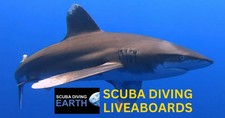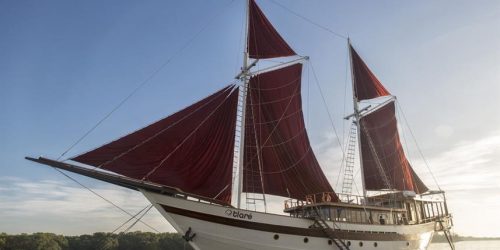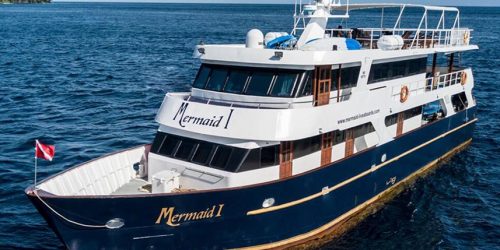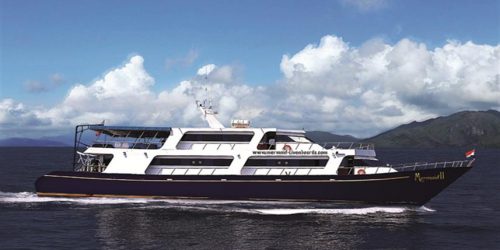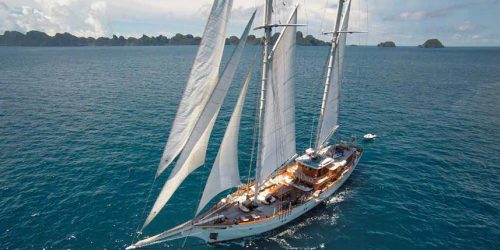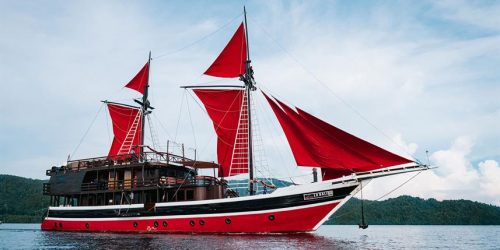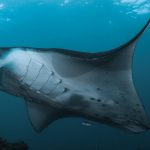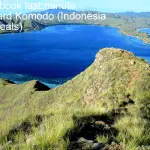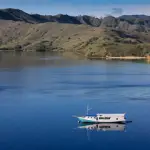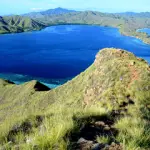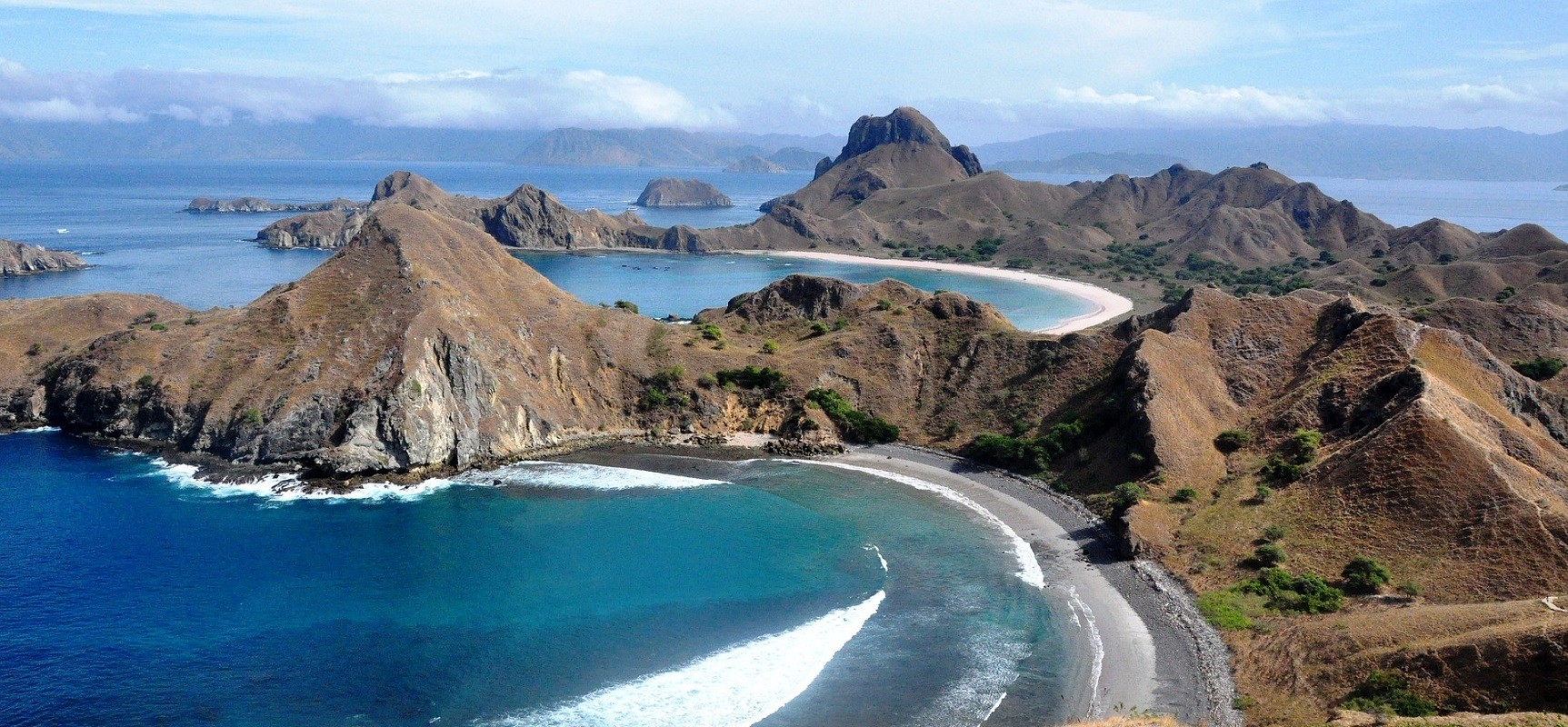
Komodo Liveaboard Diving
Komodo Liveaboard Diving Includes Manta Rays At Cleaning Stations And Strong Drift Dives At The Cauldron
Popular Komodo Liveaboards
| Tiare Cruise; Liveaboard diving in Indonesia; 9.7 out of 10 and is rated 'Exceptional'; from £334, $407, €381/day. Customer Review: “Raja Ampat done in style – such a wonderful adventure! Too many highlights. Relaxed holiday with range of 2 to 4 dives per day combined with onshore activities including some hard (staired) climbs for amazing views, a trip to Jellyfish lake and culminating on a wonderful dinner on the beach. The diving was simply more than I imagined – frequent mantas, large schools of fish, octopus, endless soft and hard corals healthier than anywhere I have been, and amazing night dive at Sapokreng – the flamboyant cuttlefish! Mixed nationality passengers made for interesting conversations – a wonderful trip. Will definitely try to go again!” Recommended for: The Indonesian crew worked tirelessly and always with a smile, the casual chicness of the gorgeous boat and the amazing dive sites – like nothing I have seen and overload of Mantas! |
| MV Mermaid I; Liveaboard diving in Indonesia; 9.2 out of 10 and is rated 'Superb'; from £254, $310, €290/day. Customer Review: “A magical 10 day diving holiday. This was one of the most amazing diving trips. Everything underwater is stunning. nothing disappoints. Te staff are wonderful and extremely helpful. I am unable to lift a tank due to back problems. They helped me every time. They also take excellent care of the equipment after dives by rinsing and hanging our wetsuits to dry and at the end of the trip cleaning and drying our BCDs and regulators as well. The reason I gave this 4* on cabin comfort is that I prefer to have the shower cubicle separate from the toilet. You get used to it after a while but it is not ideal.” Recommended for: Stunning dives, exceptional service, comfort. |
| MV Mermaid II; Liveaboard diving in Indonesia; 9 out of 10 and is rated 'Superb'; from £235, $287, €268/day. Customer Review: “An amazing experience. This was our second time aboard the Mermaid having previously visited Komodo in 2014. That trip was amazing and would have been hard to beat but this was just as good, if not better. Nothing is ever a chore for the wonderful crew, so friendly and helpful. The dive guides were fantastic especially our guide Ketut who really looked after us. All the dives were planned in advance and we went to the best sites. Very clear briefings and safety was always front of mind. The boat is really well maintained and stocked. Everything is organised to the finer details and is like a well oiled machine meaning you’re never left waiting. The food is incredible, the best we’ve had on a liveaboard. The Mermaid really sets the bar.” Recommended for: Diving, food, and crew. |
| Mutiara Laut; Liveaboard diving in Indonesia; 9.7 out of 10 and is rated 'Exceptional'; from £465, $567, €530/day. Customer Review: “Amazing Experience. Our first proper liveaboard experience and we were not disappointed. Komodo was every bit as stunning as we had been told it was and sailing around it on a boat as beautiful as Mutiara Laut, with a Crew as brilliant as we had was an absolute pleasure. Could not recommend highly enough. Hopefully see you in Raja Ampat soon!” Recommended for: Dive Sites, Crew, Food. |
| KLM La Galigo; Liveaboard diving in Indonesia; 9.2 out of 10 and is rated 'Superb'; from £252, $307, €287/day. Customer Review: “Out of this world! Crew, boat, food, diving, everything of the absolute highest standard!!! Making friends with whole crew (Tom really takes personal pride in his boat, his crew and the experience of his customers). The selection of dive sites, all amazing and the guides ability to spot and ensure the whole group saw everything was the best I have experienced in almost a dozen liveaboard trips! The food, accommodation and equipment all top standard and maintenance and cleaning and help was above and beyond!!!” Recommended for: Selection of dive sites, quality of service, standard or boat and diving equipment. |
| Scubaspa Zen; Liveaboard diving in Indonesia; 10 out of 10 and is rated 'Exceptional'; from £450, $549, €513/day. Customer Review: “Absolutely great. We had a wonderful time during this trip. We were able to dive under perfect conditions. The boat is large and very confortable. The use of a dhoni instead of a zodiac to reach the various dive sites makes a lot of difference in terms of confort and safety. We felt blessed compared to the other liveaboards. The crew was very nice and flexible so we were able to spend at our request two full days in the « Manta Valley » as the conditions were perfect and we really enjoyed this unique experience with the manta rays which was really the highlight of our trip. The dive guides and the crew manager was also flexible and keen on making sure that we reach the dive sites without other boats around. Besides, if you like diving but also enjoy spas, small trekkings and drinks at night time – pick this boat and this crew.” Recommended for: Diving, crew and the boat. |
TO SEE ALL INDONESIA KOMODO LIVEABOARDS SCROLL TO THE TABLE BELOW
Liveaboard Diving in Komodo
Komodo liveaboard diving is about nutrient rich waters with manta rays at Manta Alley and Manta Point, Nudibranchs and macro life at Rinca, a swirling drift dive at The Cauldron and muck dives at Bima. Komodo liveaboards typically offer up to three dives per day and a possible fourth night dive too.
Komodo liveaboards are exciting for two main reasons, seeing Komodo Dragons on land excursions and diving in seas that have abundant marine life with thriving pristine corals in Komodo National Park.
“These volcanic islands are inhabited by a population of around 5,700 giant lizards, whose appearance and aggressive behaviour have led to them being called ‘Komodo dragons’. They exist nowhere else in the world and are of great interest to scientists studying the theory of evolution. The rugged hillsides of dry savannah and pockets of thorny green vegetation contrast starkly with the brilliant white sandy beaches and the blue waters surging over coral.“
UNESCO
Underwater in Komodo National Park you will find teaming shoals of fish, vibrant coral reefs, seahorses, pigmy seahorses, crabs, lobsters, shrimp, cuttlefish, octopus, nudibranchs of all shapes, colours and sizes, turtles, box fish, frogfish, trevally, snapper, sunfish, manta rays, spotted eagle rays, dolphins, pilot whales, sharks and lots more besides.
When Can You See Mantas in Komodo?
The best time to see manta rays in Komodo is in December, which is the start of the rainy season in Komodo. Larger numbers of manta rays can be seen from December through March, which is when these gentle giants come to the shallow waters of Komodo National Park.
The Best Dive To See Manta Rays Komodo
The best places to see Manta Rays in Komodo National Park are Manta Point and Manta Alley. Manta Alley is a shallow drift dive where divers watch manta rays float by and Manta Point is where mantas are cleaned of parasites at this cleaning station.
Best Time to Dive in Komodo
The best time to dive in Komodo and Komodo marine reserve is from March to October, but Komodo is a year-round diving location. The best time to dive in Komodo for good visibility is November to January when visibility is 30+ metres (99+ feet).
The best time to dive Komodo for manta rays is in the rainy season, which is from December to March.
If you are are likely to suffer seasickness on a liveaboard, you need to be aware that from January to March the sea can be a bit choppy, so you may want to miss these months. Sea conditions are not too bad, but tend to be worse in the northern dive locations.
The water temperature ranges from a low in July of 25.7°C (79.1°F) to a maximum of 31.1°C (87.1°F) in December. Water temperatures remain high from October through April averaging of between 27-30°C (80.6-86°F), which is very warm.
Water temperatures in Komodo means you only ever need a 1-2mm wetsuit at most, but if you don’t feel the cold a shorty or even a rash vest will be sufficient in the warmer months.
Table of Komodo National Park liveaboards
This list of Komodo liveaboards is in descending customer rating order, so the liveaboards with the highest customer rating will be at the top of the list. To filter this table for the features that are important for your Komodo National Park liveaboard trip, select from the list of filters below.
| Discover Liveaboard | Customer Reviews | Price Per Day | |
|---|---|---|---|
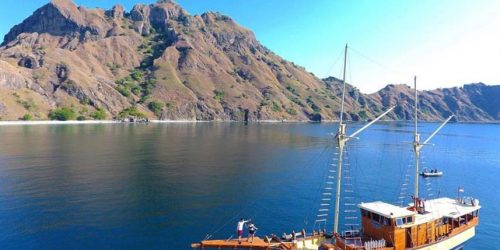 | Review: Cahaya Bersama; Book: Cahaya Bersama | 10 Exceptional | from £197; $240; €225 |
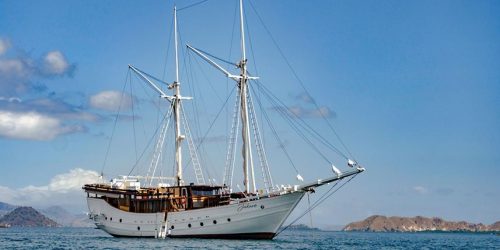 | Review: Jakaré; Book: Jakaré | 10 Exceptional | from £255; $311; €291 |
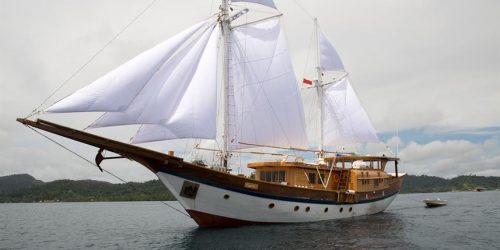 | Review: Leyla; Book: Leyla | 10 Exceptional | from £267; $326; €304 |
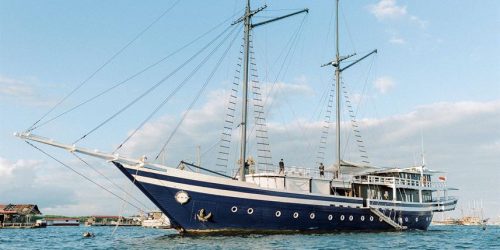 | Review: Scubaspa Zen; Book: Scubaspa Zen | 10 Exceptional | from £450; $549; €513 |
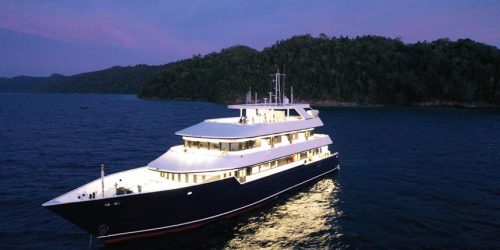 | Review: MV Seaisee; Book: MV Seaisee | 10 Exceptional | from £281; $343; €320 |
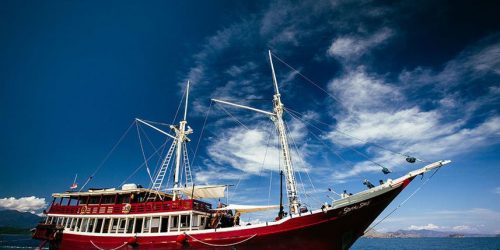 | Review: Seven Seas; Book: Seven Seas | 10 Exceptional | from £378; $461; €431 |
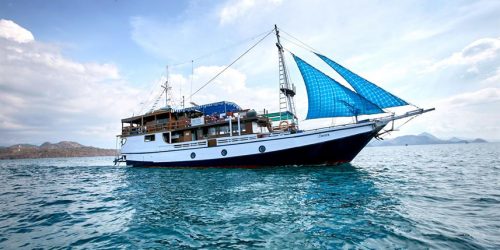 | Review: MV Tarata; Book: MV Tarata | 10 Exceptional | from £166; $203; €189 |
Note: The above “Price Per Day” was correct at the time of producing this article, as was the exchange rate used to convert the GBP cost to US Dollars and Euros. For an up-to-date cost for your chosen liveaboard, please visit the “Book” link above.
Dive Sites Of Komodo National Park
A Komodo liveaboard cruise gives divers the chance to dive many dive sites, which include the following:
- Manta Alley, which is possibly the most famous dive site in Komodo National Park, which is known for diving with manta rays. Manta Alley is located in the far south in the bay of Komodo Island. The section of the ‘alley’ dived is at a depth of 10-15 metres (33-49 feet). There is often a strong current at this dive site (see video below).
- Manta Point is where manta rays come to get cleaned of parasites, as this is a manta ray cleaning station. There are often a number of mantas here, each waiting their turn to be cleaned. Manta Point is located close to Komodo island on the northeast side. You may also find eagle rays and reef sharks here too.
- Batu Bolong (or Hollow Rock) is a small rock that lies between Komodo and Tatawa where the bottom is at about 70 metres (230 feet). Batu Bolong has a healthy coral reef where you’ll find huge shoals of fish, including tuna, together with Napoleon wrasse and whitetip reef sharks. Currents can be strong at this dive site, which means it isn’t good for beginners divers.
- Castle Rock is located north of Komodo Island on the north side of Gili Lawa Laut. The currents can be very strong on this dive, which has a number of pinnacles rising up to up to 4 meters (13 feet) below the surface and drop to 24 metres (79 feet). A great dive for whitetip reef sharks, blacktip sharks and dolphins, together with barracudas, jacks, trevallies, plus large shoals of fusiliers and surgeon fishes.
- Crystal Rock is a pinnacle that just breaks the surface at low tide, which is only a few hundred meters from Castle Rock. At Crystal Rock you are likely to see Napoleon wrasse, sweetlips, snappers, giant trevally, turtles, cuttlefish and whitetip reef sharks. There are also very strong currents here, so Castle Rock is best dived on a slack tide.
- The Cauldron (also known as The Shot Gun) is in the North area of the Komodo National Park, between Gilli Lawa Laut and Gilli Lawa Darat. The Cauldron is a sloping coral reef reaching down to a white sandy bottom at about 23 metres (75 feet), which is a huge basin carved into the seabed by the currents, which is what gives it the name “The Cauldron“. At The Cauldron you will enjoy the thrills of a fast drift dive. On the approach to the drift dive, you will find garden eels, glass fish, whitetip reef sharks, manta rays, stingrays, and small critters such a frogfish and nudibranchs (see video below).
- Cannibal Rock is a small seamount located in the Southern part of Komodo National Park, in Loh Dasami Bay, between Rinca and Nusa Kode Island. Cannibal Rock is an easy dive as it is in the shelter of the bay, which makes it suitable for beginner divers.
- Rinca Island is a great place for nudibranchs and macro critters, making it the perfect location for underwater photographers. The water around Rinca island is ringed with beautiful coral reefs and is swept by fierce currents, which makes for a challenging dive and one that’s not suitable for beginner divers. Diving at Rinca Island offers encounters with sharks, rays and tunas. Rinca Island is also where you get the chance to see Komodo dragons on the beach.
- Sangeang Island is an interesting active volcanic island. Sangeang Island consists of two volcanic cones, Doro Api and Doro Mantoi. Sangeang is one of the most active volcanoes in the Lesser Sunda Islands. The island has bubbling black sand at bubble reef. The bubbles come from underwater vents beneath the island.
- Bima dive site is a great muck diving site where you will find calm waters. The seabed at first site looks bland and uninteresting, until you start to see that it is full of nudibranchs, with the chance to see blue-ringed octopus, Mimic octopus, White V octopus and Wonderpus too. Other strange creatures found on the seabed at Bima inlet include zebra crab, Coleman shrimp, thorny seahorses, ghost pipefishes, frogfish, puffer fish and porcupine fish. Bima offers a great night dive too to see fighting crabs and shrimp.
I hope you enjoyed this page about Komodo liveaboard diving
I’d love to hear from you. Tell us about your adventures of diving and snorkeling, in the comments below. Please also share your photos. Either from your underwater cameras or videos from your waterproof Gopro’s!
If this article hasn’t answered all of your questions. If you have more questions either about snorkeling or scuba diving (or specifically about Komodo liveaboard diving), please comment below with your questions.
There will also be many more articles about scuba diving (and snorkeling) for you to read and learn about these fabulous sports.
Have fun and be safe!
Select Another Liveaboard Location
| All Liveaboard Locations |
| Discreet Liveaboard Locations |
